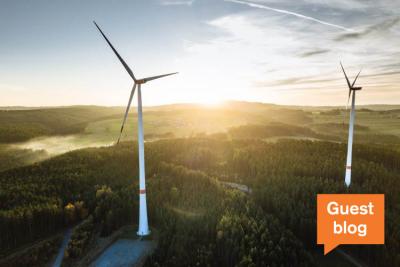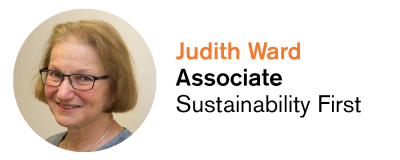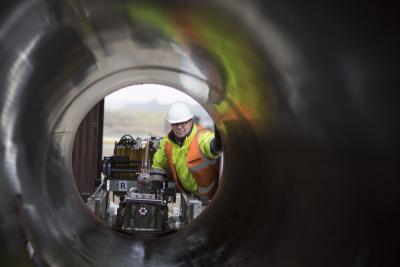- Guest blog
- Publication date
- Industry sector
- Distribution Network
- Transmission Network
As part of a series of guest blogs on a selected range of energy topics Judith Ward, Associate, Sustainability First, talks about her views on energy network innovation in RIIO-2 (the next set of energy network price controls from 2021 onwards). Read more about RIIO-2.
Our series of guest blogs represent the views of the authors writing with a view to encouraging debate about important energy topics. They do not represent the views of Ofgem, nor should they be construed as an endorsement or commitment by Ofgem to take any particular course of action.
Sustainability First is an independent think-tank and charity. We focus on practical ‘public interest’ outcomes for the energy and water sectors which can serve consumers, future consumers and the environment fairly.
Since 2000, we have been close followers of successive network price controls. Ofgem’s RIIO-2 regulatory framework will shape and endorse many tens of billions of new network investment from 2021: electricity and gas; national, regional and local.
The method of agreeing energy network price controls can seem arcane: a prolonged technical process. But outcomes are fundamental—for both consumers, ‘future consumers’ and low carbon.
Outcomes for RIIO-2
Questions of network returns aside, Sustainability First has flagged three major public interest outcomes it will look for from the RIIO-2 framework.
First, a clear focus in approaches to innovation funds and to network incentives to deliver better services for energy customers who are vulnerable and / or have additional needs.
Second, development of more meaningful approaches by the networks to stakeholder involvement. Not just during the price control negotiation, but also afterwards in ‘business-as-usual’.
Third, and the topic of this blog, the case for a new and explicit low carbon incentive.
Explicit low carbon incentive
A recent Sustainability First discussion paper proposes that serious thought be given by Ofgem, the energy network companies and other groups with a direct interest—environmental, consumer, distributed energy resources—to a new and explicit low-carbon incentive common to every energy network, to be incorporated into the RIIO-2 regulatory framework.
Of course, significant funds can already be accessed by those networks who wish to trial low-carbon innovation. And, within the current RIIO-1 price control framework, a number of incentives are also placed on the network companies to promote a variety of environmental outcomes. But these incentives are relatively fragmented. Perhaps surprisingly, none is designed to focus the networks on tackling the carbon footprint of their geography in-the-round.
Our thinking for RIIO-2 is that a new low carbon incentive could offer a clear and unambiguous signal to every energy network company for the decade ahead on the importance of shaping and facilitating lower carbon outcomes.
Such an incentive could help align network business-drivers with national carbon reduction goals; free-up networks to facilitate and innovate on different approaches to low-carbon delivery—be this via energy efficiency and demand-side programmes, local bio-gas, low carbon heat, new collaborations & partnerships—with regions, cities, communities, innovators. It would sit alongside other important drivers which already shape the network price control framework—for economic and operational efficiency, for resilience, for customer service.
Scope of the incentive
Our paper outlines the scope of a possible new low carbon incentive across low carbon sources, network operation and de-carbonising demand. It looks at the possible structure of a new low carbon incentive, including to what extent the focus might be ‘reputational’ or quantitative. We explore three high-level options: quantified; qualitative under-pinned by metrics; or, qualitative-only. On balance, the paper points towards the middle option—qualitative under-pinned by metrics as a practical start point—for a RIIO-2 low-carbon incentive. But, with a clear eye to more quantification over time. The approach on the new system operator incentive perhaps points the way.
Photo credit: National Grid
We recognise that achieving the ‘right design’ for a low carbon incentive may prove quite hard: issues of quantification, measurement & evaluation, demonstrable ‘additionality’ of outcome, how this new incentive would sit alongside other environmental incentives, impacts on returns, the potential for ‘gaming’, plus, unintended outcomes, including distributional impacts (if any). Each will need careful thought. Even so, we conclude that the upside of giving a clearer signal to every energy network on their role in low carbon delivery is a good reason to try.
To ‘test’ our proposition we wish to see a wide discussion of three questions:
- Is a new explicit low-carbon incentive in RIIO-2, common across the energy networks, desirable in principle?
- What practical lessons from the RIIO-1 environmental incentives could help inform development of a new low carbon incentive in RIIO-2?
- Do we fully understand the pros and cons of different approaches to design of a new incentive—qualitative, quantitative—or a mix?
Ideally, we would wish Ofgem to initiate some background work—to help answer some of the more technical aspects of these questions.
Energy networks are rightly proud of their place in delivery of critical services. A new low carbon incentive would sit alongside other important drivers in network price controls for efficiency and for customer service. A new strategic signal, one which recognises the fundamental role that energy networks will play on low carbon in the decade ahead, would give clear regulatory backing to any network company resolved to become fit for the future.


